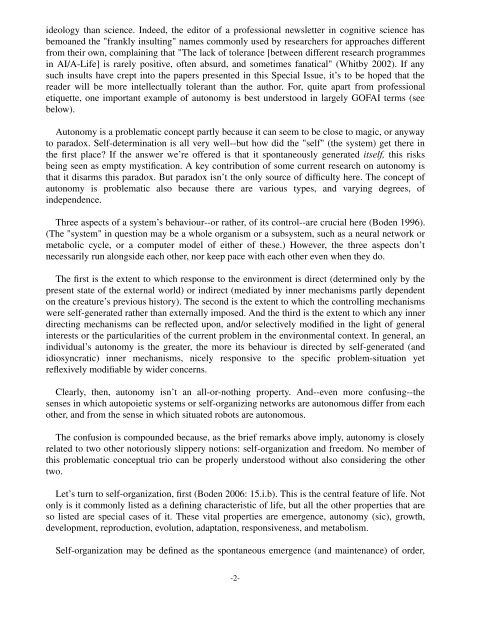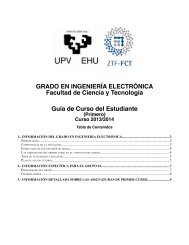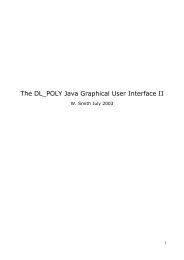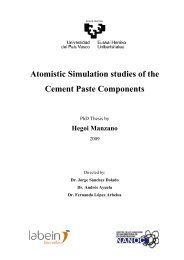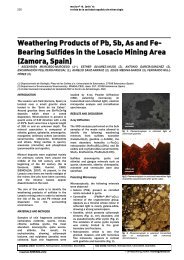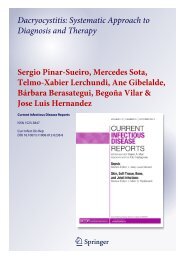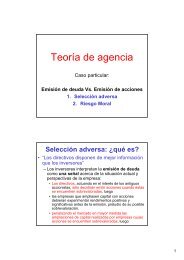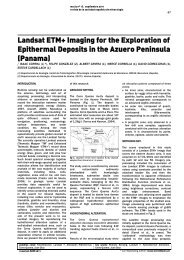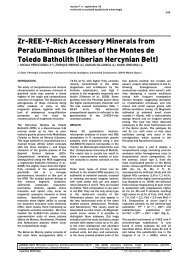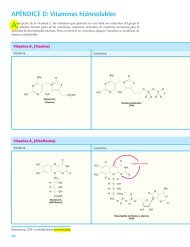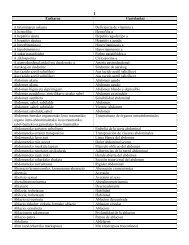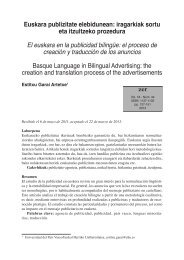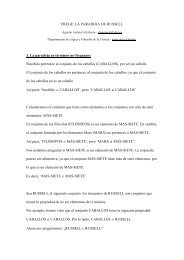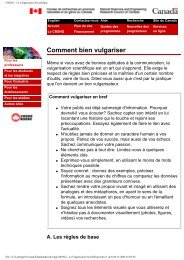AUTONOMY: WHAT IS IT? Margaret A. Boden University of Sussex ...
AUTONOMY: WHAT IS IT? Margaret A. Boden University of Sussex ...
AUTONOMY: WHAT IS IT? Margaret A. Boden University of Sussex ...
Create successful ePaper yourself
Turn your PDF publications into a flip-book with our unique Google optimized e-Paper software.
ideology than science. Indeed, the editor <strong>of</strong> a pr<strong>of</strong>essional newsletter in cognitive science has<br />
bemoaned the "frankly insulting" names commonly used by researchers for approaches different<br />
from their own, complaining that "The lack <strong>of</strong> tolerance [between different research programmes<br />
in AI/A-Life] is rarely positive, <strong>of</strong>ten absurd, and sometimes fanatical" (Whitby 2002). If any<br />
such insults have crept into the papers presented in this Special Issue, it’s tobehoped that the<br />
reader will be more intellectually tolerant than the author. For, quite apart from pr<strong>of</strong>essional<br />
etiquette, one important example <strong>of</strong> autonomy is best understood in largely GOFAI terms (see<br />
below).<br />
Autonomy is a problematic concept partly because it can seem to be close to magic, or anyway<br />
to paradox. Self-determination is all very well--but how did the "self" (the system) get there in<br />
the first place? If the answer we’re <strong>of</strong>fered is that it spontaneously generated itself, this risks<br />
being seen as empty mystification. A key contribution <strong>of</strong> some current research on autonomy is<br />
that it disarms this paradox. But paradox isn’t the only source <strong>of</strong> difficulty here. The concept <strong>of</strong><br />
autonomy is problematic also because there are various types, and varying degrees, <strong>of</strong><br />
independence.<br />
Three aspects <strong>of</strong> a system’s behaviour--or rather, <strong>of</strong>its control--are crucial here (<strong>Boden</strong> 1996).<br />
(The "system" in question may be a whole organism or a subsystem, such as a neural network or<br />
metabolic cycle, or a computer model <strong>of</strong> either <strong>of</strong> these.) However, the three aspects don’t<br />
necessarily run alongside each other, nor keep pace with each other even when they do.<br />
The first is the extent to which response to the environment is direct (determined only by the<br />
present state <strong>of</strong> the external world) or indirect (mediated by inner mechanisms partly dependent<br />
on the creature’s previous history). The second is the extent to which the controlling mechanisms<br />
were self-generated rather than externally imposed. And the third is the extent to which any inner<br />
directing mechanisms can be reflected upon, and/or selectively modified in the light <strong>of</strong> general<br />
interests or the particularities <strong>of</strong> the current problem in the environmental context. In general, an<br />
individual’s autonomy is the greater, the more its behaviour is directed by self-generated (and<br />
idiosyncratic) inner mechanisms, nicely responsive to the specific problem-situation yet<br />
reflexively modifiable by wider concerns.<br />
Clearly, then, autonomy isn’t an all-or-nothing property. And--even more confusing--the<br />
senses in which autopoietic systems or self-organizing networks are autonomous differ from each<br />
other, and from the sense in which situated robots are autonomous.<br />
The confusion is compounded because, as the brief remarks above imply, autonomy is closely<br />
related to two other notoriously slippery notions: self-organization and freedom. No member <strong>of</strong><br />
this problematic conceptual trio can be properly understood without also considering the other<br />
two.<br />
Let’s turn to self-organization, first (<strong>Boden</strong> 2006: 15.i.b). This is the central feature <strong>of</strong> life. Not<br />
only is it commonly listed as a defining characteristic <strong>of</strong> life, but all the other properties that are<br />
so listed are special cases <strong>of</strong> it. These vital properties are emergence, autonomy (sic), growth,<br />
development, reproduction, evolution, adaptation, responsiveness, and metabolism.<br />
Self-organization may be defined as the spontaneous emergence (and maintenance) <strong>of</strong> order,<br />
-2-


